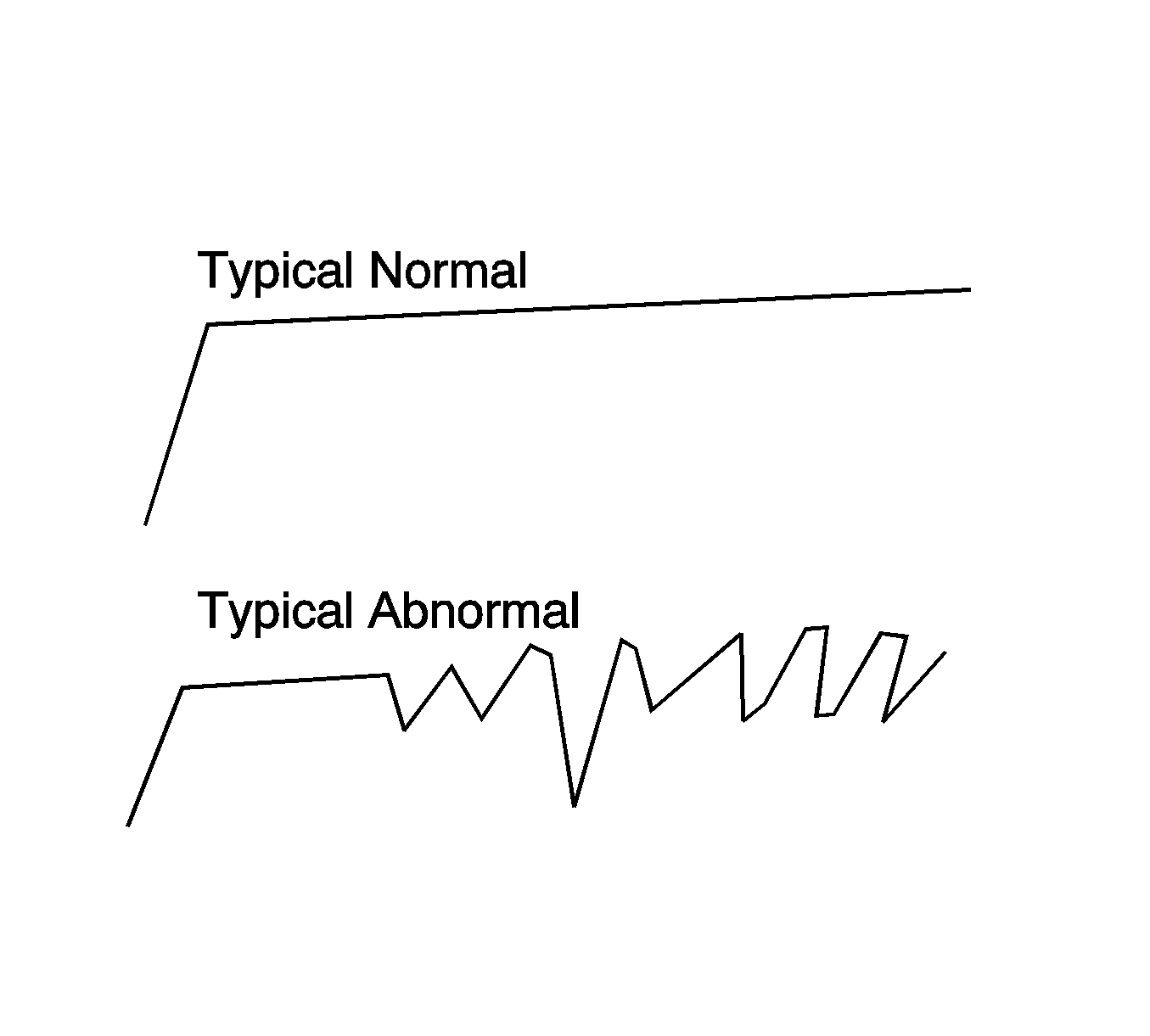Typical Data

Diagnostic Aids
Warning: While engine is operating, the exhaust system will become extremely hot. To prevent burns avoid contacting a hot exhaust system.
Note: If the vehicle is equipped with a diesel engine do not perform this diagnostic. The exhaust system does not have a location for installing the J 35314-A Exhaust Back Pressure Gage. Instead remove the suspect component, operate the vehicle and verify for improved performance. If performance is improved, then replace the faulty component.
Test Description
The numbers below refer to the step numbers on the diagnostic table.
-
Certain exhaust restrictions are not present during idle or low load conditions. This step will isolate to a restricted exhaust that is present during high engine load conditions.
During high engine load, the 02 sensor(s) voltage will cross count several times upon initial load, then climb high and stay high.
During high engine load, the 02 sensors voltage will continue to cross count from high to low voltage.
-
The exhaust system has very low back pressure under normal conditions. If the exhaust system is restricted, a significant increase in the exhaust pressure is noticed on the J 35314-A .
Removing the heated oxygen sensor (HO2S) may set a DTC. When finishing this diagnostic table, be sure to clear all codes.
-
Confirming that the condition has been fixed is essential. If the symptom still exists and the vehicle has a dual exhaust system, proceed to step 2 and repeat diagnostic procedure on the opposite exhaust pipe.
Step | Action | Value(s) | Yes | No | ||||||||||||
|---|---|---|---|---|---|---|---|---|---|---|---|---|---|---|---|---|
1 | Did you verify the customers complaint? | -- | Go to Step 2 | -- | ||||||||||||
2 | Are any DTCs present? | -- | Go to Step 3 | |||||||||||||
3 | Did you review the exhaust symptoms diagnostic information and perform the necessary inspections? | -- | Go to Step 4 | |||||||||||||
4 | Does the engine start? | -- | Go to Step 6 | Go to Step 5 | ||||||||||||
5 | Were you sent here from Engine Cranks but Does Not Run diagnostic chart? | -- | Go to Step 7 | Go to Engine Cranks But Does Not Run for the 3.4L engine or Engine Cranks But Does Not Run for the 2.8, 3.0, 3.2, 3.6L engine | ||||||||||||
6 | Is the condition present at idle/park? | -- | Go to Step 9 | Go to Step 8 | ||||||||||||
7 |
Warning: Refer to Hot Exhaust System Warning in the Preface section.
Does the engine start? | -- | Go to Step 11 | Go to Engine Cranks But Does Not Run for the 3.4L engine or Engine Cranks But Does Not Run for the 2.8, 3.0, 3.2, 3.6L engine | ||||||||||||
Is the O2 sensor voltage spiking? | -- | Go to Step 11 | Go to Symptoms - Engine Controls for the 3.4L engine or Symptoms - Engine Controls for the 2.8, 3.0, 3.2, 3.6L engine | |||||||||||||
|
Warning: Refer to Hot Exhaust System Warning in the Preface section.
Does the reading exceed the specified value? | 27.6 kPa (4 psi) | Go to Step 10 | Go to Step 8 | |||||||||||||
10 |
Does the reading exceed the specified value? | 27.6 kPa (4 psi) | Go to Step 11 | Go to Step 8 | ||||||||||||
11 | Inspect the exhaust system for the following conditions:
Did you find and correct the condition? | -- | Go to Step 14 | Go to Step 12 | ||||||||||||
12 | Replace the catalytic converter. Did you find and correct the condition? | -- | Go to Step 14 | Go to Engine Cranks But Does Not Run for the 3.4L engine or Engine Cranks But Does Not Run for the 2.8, 3.0, 3.2, 3.6L engine | ||||||||||||
13 |
Did you correct the condition? | -- | System OK | Go to Symptoms - Engine Controls for the 3.4L engine or Symptoms - Engine Controls for the 2.8, 3.0, 3.2, 3.6L engine | ||||||||||||
Did you correct the condition? | -- | System OK | Go to Symptoms - Engine Controls for the 3.4L engine or Symptoms - Engine Controls for the 2.8, 3.0, 3.2, 3.6L engine |
